The Division of Agriculture purchased this property in 1960 from the U.S. Forest Service and operated it as a substation of the Cotton Experiment Branch Station until 1975 when it became a separate branch station. While under federal control, the nearly 12,000-acre unit was being rehabilitated from submarginal row crop production ground to mostly a pasture and timberland operation. After being acquired by the Division of Agriculture, the original mission emphasis on pasture/livestock production and forestry/timberland was maintained, but vast improvements in production techniques allowed what is now called the Pine Tree Research Station, or PTRS, to also introduce a row crop research orientation as well.
In 1963, cattle were transferred to the station after pastures were cleared, limed, and seeded to legumes and bermudagrass, and PTRS was assigned its first full-time research assistant. Forestry research was initiated with white ash, pumpkin ash, loblolly pine, and shortleaf pine studies in 1966 and 1967. Land suitable for row crop production was converted, and an irrigation well was drilled, with the first rice crop planted in 1967, and the first soybean crop planted in 1968. By 1974, row crop acreage had increased to 400 acres while the cattle herd peaked at nearly 750 head a year later.
The Division of Agriculture retired the land purchase debt with the U.S. Department of Agriculture in 1976 and received the deed in 1978. By 1982, the cattle herd had been removed and the research was primarily focused on row crop production. Today PTRS has nearly 3,500 tillable acres with approximately 8,000 acres in forestlands/timber production.
Source: https://aaes.uada.edu/research-locations/pine-tree-research-station/
Goals
The primary objectives for the forest resources at PTRS include:
- Multiple-objective management of bottomland and bottomland terrace hardwood forests
- Properly managed bottomland hardwood forests generate opportunities to meet multiple management objectives simultaneously. Taking action to create healthy forests that are productive for timber, wildlife, recreation, aesthetics, and environmental quality begins with sound forest management practices.
- Improve overall forest health and productivity
- Forest management to improve health and productivity includes promoting and maintaining desirable species for management. In the case of bottomland hardwoods, this management is centered on promoting oak species suited to the site conditions.
- Improve forest habitat for migratory waterfowl
- Forest management to improve habitat for waterfowl includes maintaining conditions for natural flood events, promoting hard mast producing species (i.e., oaks), maintaining openings in the forests for access, and other operations.
- Improve forest habitat for game species, including deer, turkey, squirrel, and rabbit
Management of bottomland forests for game species starts with the hard mast producing trees. Generating a diversity of cover types and openings to create ground level browse is essential.
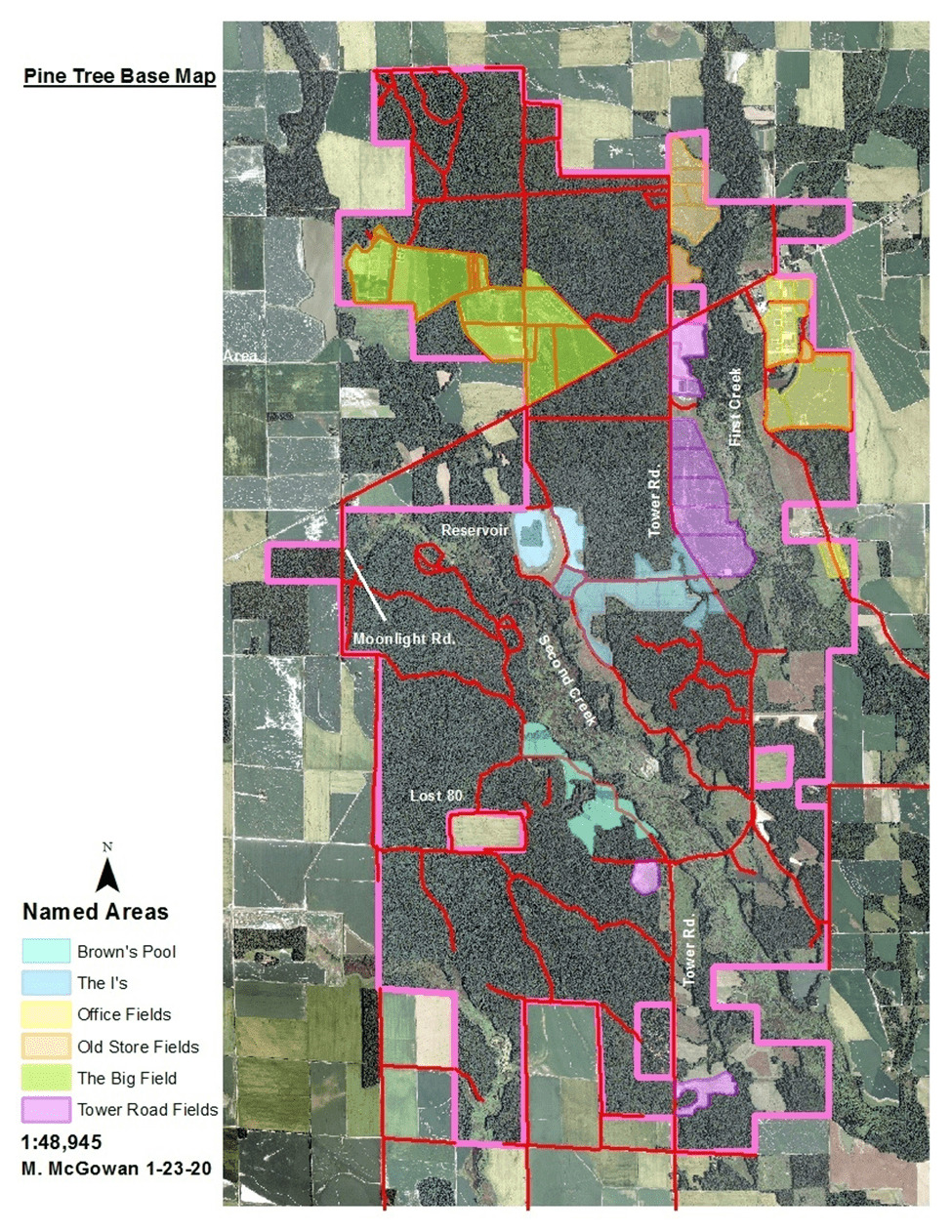
Fig. 1. An aerial map of the Pine Tree Research Station forestland.
Fig. 1 shows the border of the station in pink, with red borders defining certain tracts and landmarks. Note the farmland adjoining forestland and the private tracts within the station boundaries.
PTRS’ forestlands are the largest of all the AES centers and stations, with approximately 8,000 acres of forests. The timber is uniformly bottomland hardwoods, and hydrology is the main determinant of species. Elevation increases of mere inches are enough to turn the overstory from one set of tree species to another. The station is divided into thirds by two creeks which feed into the L’Anguille River. While the development of row crop fields surrounding PTRS have altered the flow of water across it, the low spots where water sluggishly moves towards those creeks stay saturated for much of the year. During dry years, timber harvests can occur in late summer through fall.
Past Management
Records of past management activities are sparse, but the condition of the forests indicates that there hasn’t been comprehensive or active management since the mid-1970s. There were some pines planted in the 1960s or 1970s that became over-mature and were subsequently harvested in 2015.
The largest harvest of record occurred sometime in the mid-1990s. The forests in stands A1 and A2 in the northwest corner of PTRS were harvested, and some of the proceeds were used to build the PTRS headquarters building, which was finished in 1999. A close look at Fig. 2 shows the treetops are more widely spaced in A1 and the western half of A2, when compared to what is seen in A3 or A35.

Fig. 2. A detailed view of the management blocks in the northern sector of the Pine Tree Research Station forestlands.
The next harvest of record at PTRS was in stands A13-A34. Forest research from the Arkansas Forest Resources Center (a joint center between the Division of Agriculture and the University of Arkansas at Monticello) in addition to peer-reviewed research from other institutions (e.g., Self, et al. 2020, Miller, et al. 2017, and Cunningham, et al. 2011), indicated that a shelterwood harvest, including midstory removal, was among the most appropriate methods for naturally regenerating mature oak (Quercus spp.) forests. To demonstrate the value of the practice, a 300-acre cutting trial was established where several silvicultural methods were used: thin-from-above, thin-from-below, Q-factor management, clearcut regeneration harvest, and shelterwood regeneration harvest.
Difficulties in scheduling a harvest were repeatedly encountered. The soil type and moisture levels at PTRS restricted the harvest window so that a second logging crew had to be sub-contracted in order to finish. The distance of PTRS to mills means few loggers are in the area to bid on sales. Additionally, the lack of historical harvest data prevents loggers from being able to adequately judge the quantity and quality of the timber at sale.
At the conclusion of the project, the results were monitored for two growing seasons before reaffirming that the shelterwood harvest method does work well in the mature hardwood stands at PTRS.

Fig. 3. St C9 was divided into approximately 200-acre management blocks.
The next series of management steps took place in St C9, which was divided into management blocks of approximately 200 acres each after experience demonstrated that 300-acre harvests were too large for the limited cutting window at PTRS. Work began in 2012 on St C9b, with PTRS crew being utilized to hack and squirt the tract to control the midstory canopy layer and encourage oak regeneration. The tract was marked in the winter of 2013, and the thinning operation that starts the shelterwood process was harvested in 2014-2015. The sale was still too large to finish in the cutting window, even though only 2/3 of the timber was cut. Many small DBH hickory sawlogs and pulp sticks didn’t get cut. The same procedure was followed in 2016 when C9c was harvested.
C9a, C9b, and C9c were burned in a prescribed fire in November of 2016.

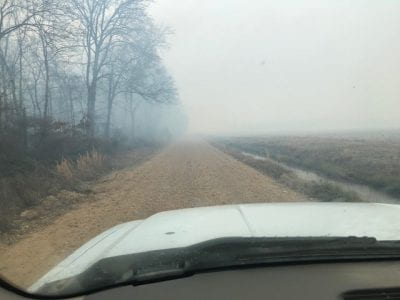
Fig. 4. Top: Smoke as seen from U.S. Hwy 64. Bottom: View of burn area from Tower Rd. (Photos courtesy of Pine Tree Research Station Director Shawn Clark.)
In 2015, there was also a pine sale where the pine trees planted in the 1960s were harvested. These trees were overmature, extremely large, and beginning to die on the stump. Hardwoods in these stands were left to reseed.
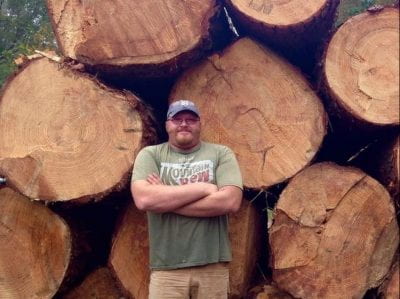
Fig. 5. AES Statewide Forester Mike McGowan standing by a pine sawlog deck from trees harvested just north of Pine Tree Baptist Church in 2015.
Current Management
After six years, it is time to remove the shelter trees from the two St C tracts that were harvested in 2014 and 2016. Removing the shelter trees provides additional growing space for the regenerated oak forests and allows the value of the remaining quality sawlog overstory trees to be captured.
To accomplish this, the two shelterwood stands were divided in half. Neither sale area was able to be 100 percent thinned because of the short harvesting window. It was learned that 180-200 acres cannot be felled and hauled in just three to four months.
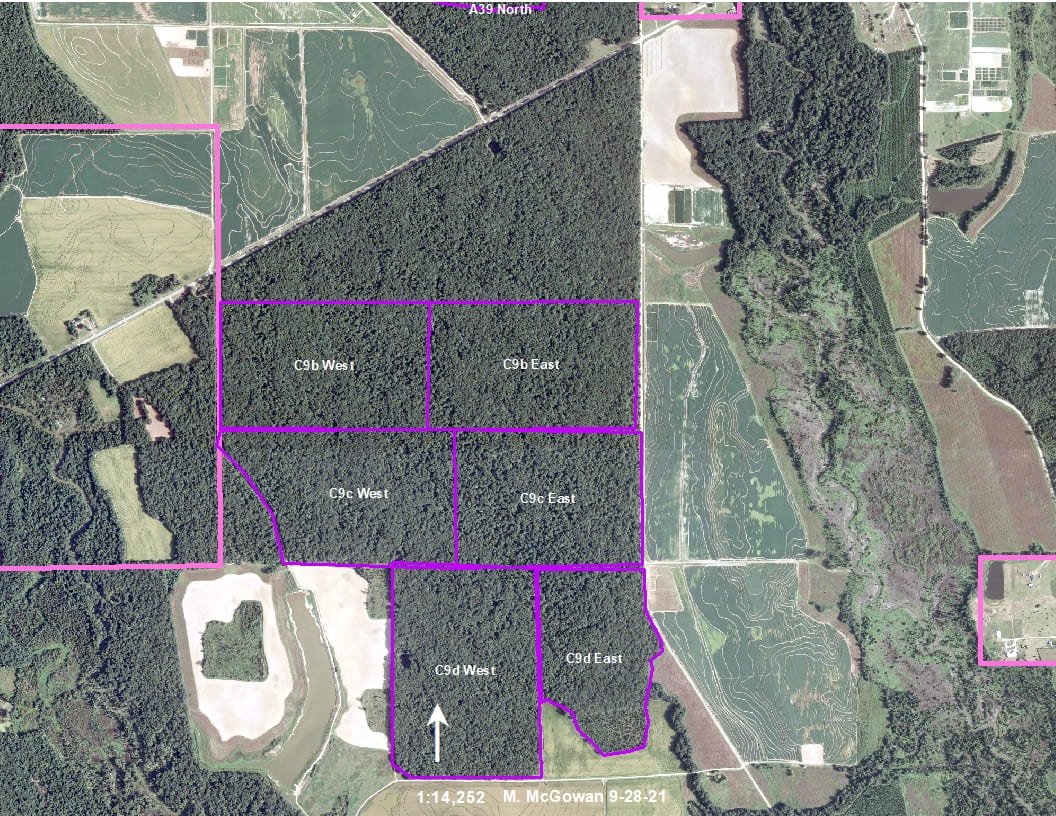
Fig. 6. St C9 management blocks were further divided by half due to the limited harvesting window at the Pine Tree Research Station.
In the summer of 2021, an accepted bid for timber sale on C9b West was approved. Once C9b West has been harvested, the plan calls for a clockwise harvest pattern through the four C9 stands over the course of four consecutive years.
Future Management
Future forest management at the Pine Tree Research Station will include regeneration of existing even-aged mature oak stands, maintenance of emergent wetlands, restoration of floodplain forest stands, and development of terrace position open woodlands. In addition to scheduled forest management, research projects exploring stand establishment and development over time will be conducted by research faculty. Additionally, a new cutting demonstration area may be established to assist with forest management education programs for the area.
Fig. 8 illustrates the locations of the various cover types discussed in future management. The mature hardwood zone, the largest area in acreage, will be the focus of regeneration harvests. The harvests will occur in stands shown in Fig. 9 over a twenty-year period.
The harvest plan for mature hardwood stands at Pine Tree will primarily use the shelterwood method described for natural regeneration. Clearcut regeneration harvests will be incorporated in two ways: (1) to provide opportunity for species enrichment plantings (e.g., cherrybark oak and other hard mast species), and (2) to create wildlife openings (small clearcuts) to supplement wildlife habitat diversity. Wildlife-oriented clearcuts may be incorporated within broader shelterwood harvests.
The regeneration harvest methods employed will provide unique opportunities to manage regenerated forest stands for multiple objectives. Shelterwood harvests will provide canopy gaps to increase sunlight to the ground, recruit new oak seedlings, and increase cover and browse for wildlife (Fig. 7). Once successfully established, these forests can be either managed as a single aged stand developed from the new regeneration or as two aged forests with the shelter trees remaining to be managed through time.
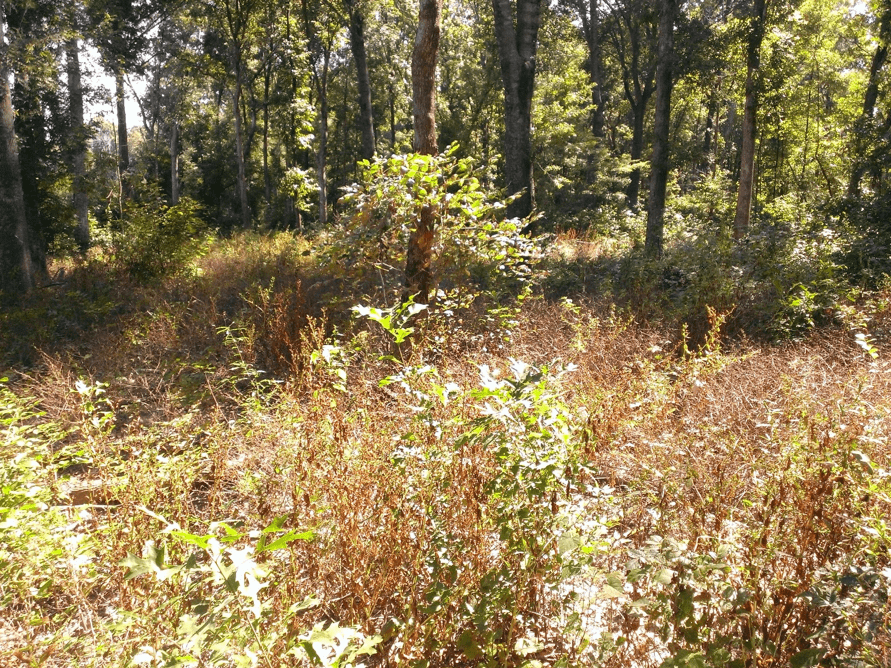
Fig. 7. A shelterwood harvest in its third year at Pine Tree.
Addressing a major goal of wildlife management will require specific considerations when conducting timber harvests on PTRS. These are often minor adjustments but can have significant impacts on habitat. Some of these practices will include (among others):
- Avoiding removal of hollow/den trees within harvest boundaries. Den trees provide shelter and nesting habitat for many wildlife species including birds and small mammals.
- Topping trees where they are felled. Leaving treetops dispersed through the harvest area provides cover for wildlife, helps protect against soil erosion, and reduces potential damage to trees remaining after the harvest.
- Non-uniform marking in harvest operations. Although even-age regeneration harvests (e.g., shelterwood and clearcut) are primarily used, AES does not employ set spacing on “leave” trees in marking hardwood stands. This practice is employed on regeneration cuts and thinning operations. The goal is to leave the best trees to achieve the goal of the harvest operation regardless of spacing. The result are stands that are not uniform and provide gaps in the upper canopy to increase sunlight to the ground level vegetation.
Simple additional steps to traditional harvesting can supplement wildlife management objectives for the station. Through time, AES will work with Division of Agriculture wildlife biologists to include more practices to enhance wildlife habitat.
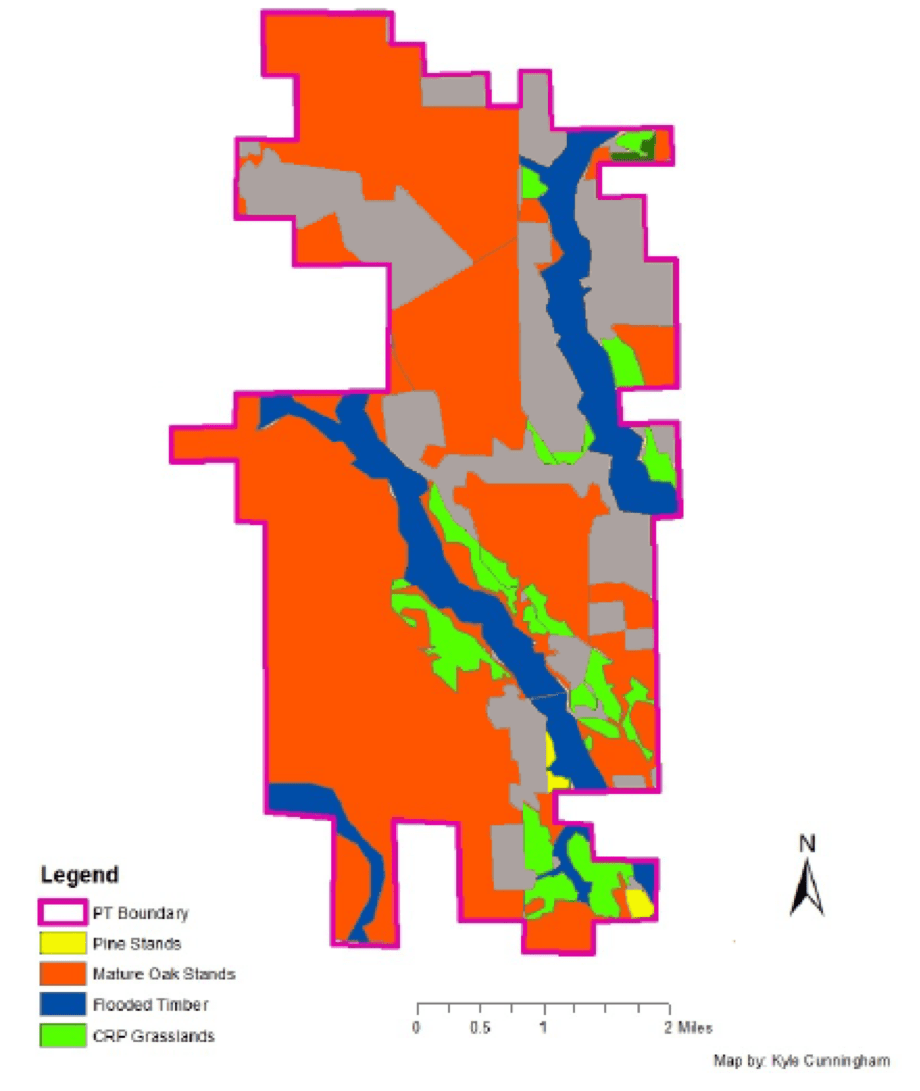
Fig. 8. Land cover types at the Pine Tree Station
There are adequate existing forest acres at PTRS to sustainably harvest 100 acres per year over an 80-year period. Incorporating the harvests will create a healthy, productive forest base to implement future multiple-objective management operations for years to come. Sufficient acreage exists in mature forest to implement a project to demonstrate various harvest practices, such as harvesting stands to a range of target residual harvest densities (i.e., basal areas). The demonstration area would provide an excellent opportunity for educational programs and further supplement existing bottomland hardwood research on the station.
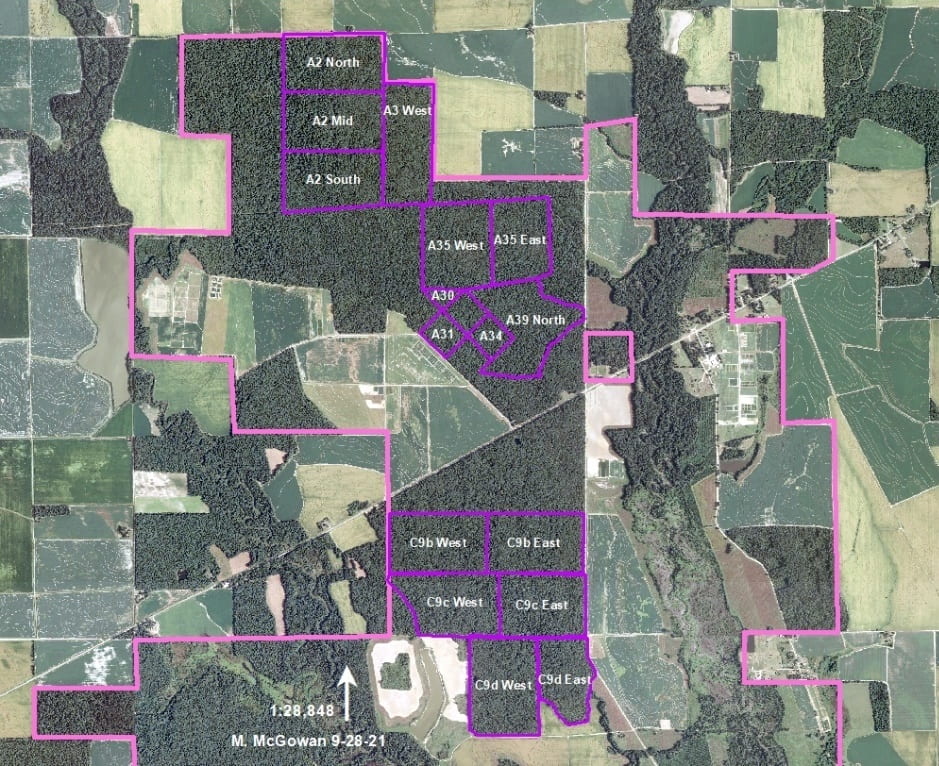
Fig. 9. Future harvest areas at the Pine Tree Research Station.
PTRS provides additional opportunities to manage terrace position hardwoods that do not flood and exhibit more upland characteristics. These forested areas, with a presence of upland hardwood species (e.g., post oak and white oak), can utilize commercial thinning combined with a prescribed fire program to create a unique “open” woodland resource. The resulting woodlands will provide quality habitat for deer, turkey, and other game and non-game species for years. Initial harvests can follow the shelterwood guidelines with an emphasis on employing variable retention harvesting for wildlife.
Additional management on terrace position woodlands could include mechanical and chemical operations designed to emphasize early successional habitat development. The operations would be used in unison with prescribed fire.
Unique to PTRS are the emergent wetlands along Second Creek represented by the blue zone of flooded timber in the central area of Fig. 8. This wetland (Fig. 10) was created by beaver dams and subsequent flooding over a period of years. Initially, it was thought that this was a negative and costly consequence from beaver damage, resulting in severe impact on the forest. However, after visits from AFRC wildlife research and extension faculty, it has been determined that this wetland should be maintained to benefit migratory waterfowl. The plan will be to monitor the area for water levels and associated plant and tree communities. Input will be sought from wildlife research faculty and Arkansas Game and Fish Commission to help decide how to best maintain the area through time.
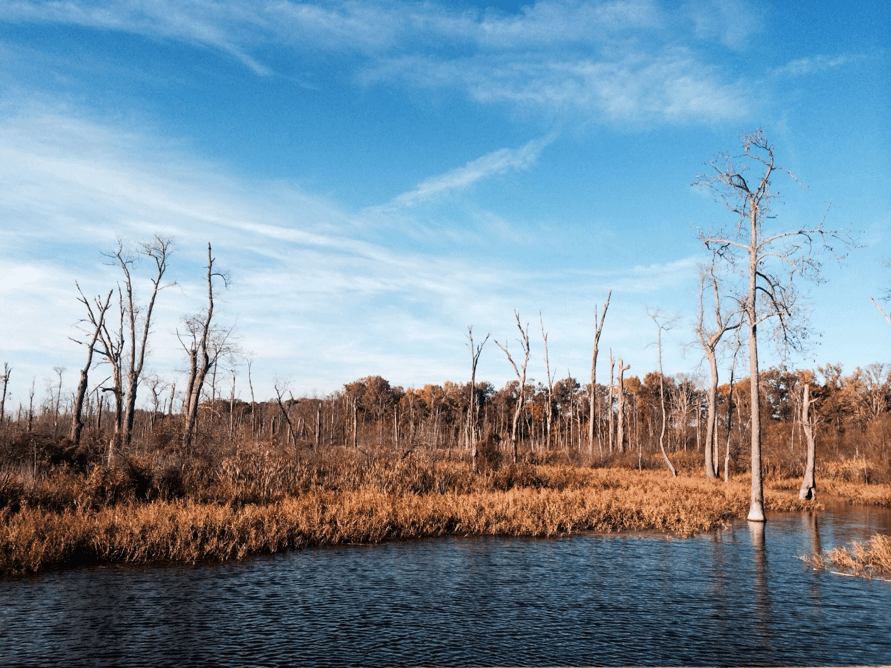
Fig. 10. The emergent wetland located along Second Creek.
An area for future management is comprised of beaver-damaged timber along First Creek. This area is shown as the blue zone in the upper right of Fig. 8. Management in this zone will include continued control of the beaver population and removal of dams restricting natural water flow (Fig. 11). In addition, forest management operations will be conducted to reduce invasive species and promote desirable tree species. These efforts will be conducted primarily through individual plant treatments using hack and squirt injection methods.
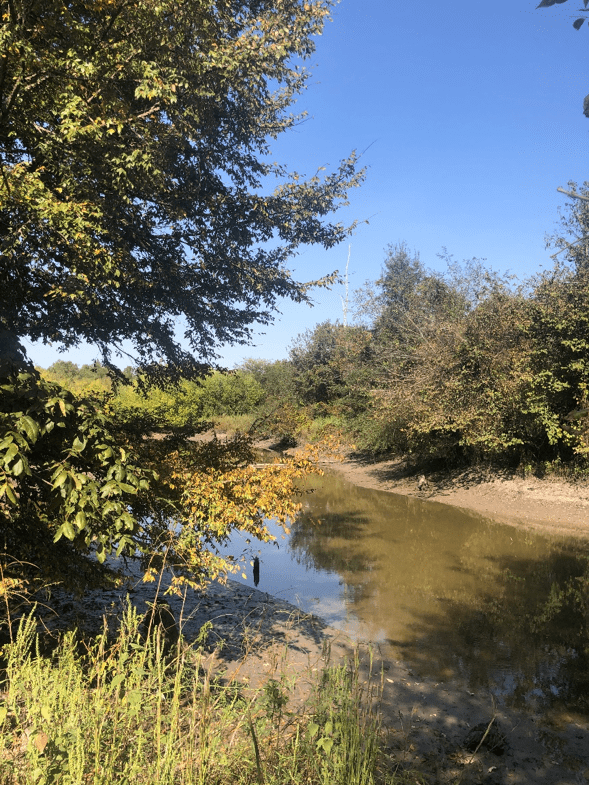
Fig. 11. First Creek following beaver dam removal.

Partner Comments for Pine Tree Research Station
Arkansas Department of Agriculture – Forestry Division
The Forestry Division provided approval of the plan based on current stand conditions and planned future operations. Comments provided were:
In response, AES described in more detail the specific benefits associated with each management objective, and more clearly linked management operations to management goals. AES included the land cover map in Figure 3-8. Additionally, AES added sections specific to management for specific cover types.
Arkansas Game and Fish Commission
The Arkansas Game and Fish Commission (AGFC) approved the plan and commented that the plan sent should include species requiring specific habitat requirements. For example, bird species of concern that require variation in forest structure both vertically and horizontally for adequate habitat.
1. Harvesting operations to create canopy gaps and diverse structure within forest stands would be beneficial. The shelterwood method AES employs along with some variable retention harvesting will increase this variable structure habitat type. Variable retention harvesting is a harvest method that removes trees of varying sizes and spacings to increase opens and retain structure in the stand.
2. Stands should be identified on terrace positions for thinning to a low basal area and incorporate prescribed fire. The result would be open woodland areas to create wildlife habitat unique to the area.
3. AGFC should be able to assist with prescribed burns planned for terrace hardwood stands.
In response, AES provided more detail on how wildlife management goals will be achieved, and added that variable retention harvesting could be a component in the operations to create open woodlands on terrace position stands. AES further described our initial plan for the even-age mature hardwood stands is to conduct regeneration harvest operations. The shelterwood method employed inherently creates canopy gaps and clumps of trees. Once desirable regeneration is established, a variety of management options will be available moving forward. AES also emphasized more intently the need to include small clearcut zones within shelterwood regeneration areas. Furthermore, AGFC has been an involved partner for many years at PTRS. AES encourages AGFC to continue that partnership and provide additional management input and resources. AES greatly appreciates working in unison with AGFC at PTRS.
U.S. Forest Service
The U.S. Forest Service (USFS) stated that the plan is based on scientific research, and silvicultural operations described in the plan are scientifically sound and appropriate for regeneration of mature bottomland hardwood stands.
In response, AES described in more detail our planned utilization of clearcut harvesting to achieve two goals: (1) to create open areas for enrichment plantings of desirable species, and (2) increase sunlight to ground to enhance browse and cover for wildlife. AES also added a plan to establish a demonstration area similar to the one described by USFS. There are several AFRC-led research projects currently in place and plans are to continue to expand those efforts in the future.
Back to the Managing Our Forestlands Main Page